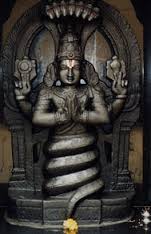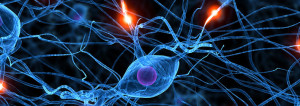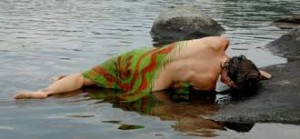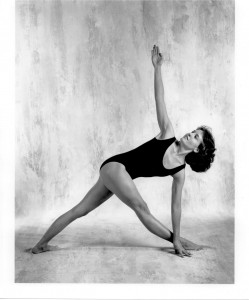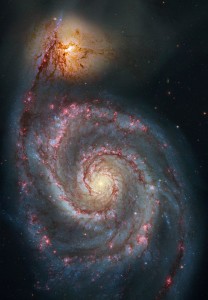 I decided to call my Ojai classes “Cosmic Yoga”. I’d rather call them just ‘yoga’, but there are so many variations of yoga out there, some truly horrifying, that the term ‘yoga’ can be very misleading. And I figured I might get the right people’s attention with the word ‘Cosmic’. We’ll see how it goes!
I decided to call my Ojai classes “Cosmic Yoga”. I’d rather call them just ‘yoga’, but there are so many variations of yoga out there, some truly horrifying, that the term ‘yoga’ can be very misleading. And I figured I might get the right people’s attention with the word ‘Cosmic’. We’ll see how it goes!
What is Cosmic Yoga ? My cosmic origins go back 13.7 billion years or so, but my cosmic teaching actually began when I met Thomas Berry and his protégé Brian Swimme back in the early 1980’s. They provided a context for my life and teaching that was unlike anything I had ever experienced or even imagined.
Bea Briggs, a yoga teacher from Chicago, told me about Brian, an astro-physicist by training, who lived in the Bay Area and suggested I contact him. I did and he mentioned he was just about to begin teaching a course at Holy Names College in Oakland, a few miles from my home, and suggested I take the course. The material covered the core of Thomas Berry’s work and became the basis for Brian’s ‘Canticle to the Cosmos’ video/cd set, 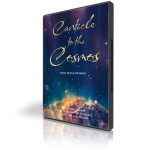 which I highly recommend for anyone with cosmic aspirations. Through Brian I met Thomas and my life changed dramatically. (Brian, also featured in the Science section of this site with the “Powers of the Universe’ also has played a huge role in my own unfolding.)
which I highly recommend for anyone with cosmic aspirations. Through Brian I met Thomas and my life changed dramatically. (Brian, also featured in the Science section of this site with the “Powers of the Universe’ also has played a huge role in my own unfolding.)
Thomas became a major mentor to me also, and I was blessed to spend time with him on many occasions over the years, the highlight being the week Bea Briggs, Thomas and I spent at Feathered Pipe Ranch in Montana, somewhere back in the mid 1980’s, co-teaching “Yoga and the Cosmic Creation Story”. We were a little ahead of our time, but it was a fascinating week.
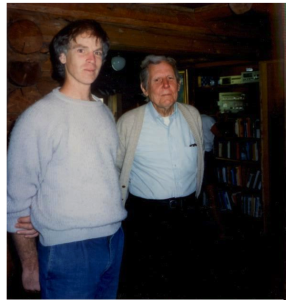 Thomas was a Catholic priest, amazingly enough, but primarily a scholar of human culture. Widely read in European history, Thomas also was deeply impressed with the East and wrote books on Buddhism and the Religions of India. And most of all, Thomas was an awakened Visionary. I am still in awe at how clearly and succinctly he assessed the modern era, saw how as a species we arrived at our historical moment, and chartered a very detailed path to restore harmony and balance to the planet. He fully embodied ‘the awakening process’ in a totally unique and profound way. He was a Taoist, a cosmologist and a spiritual teacher, but he always referred to himself as a ‘geologian’, a student of the earth.
Thomas was a Catholic priest, amazingly enough, but primarily a scholar of human culture. Widely read in European history, Thomas also was deeply impressed with the East and wrote books on Buddhism and the Religions of India. And most of all, Thomas was an awakened Visionary. I am still in awe at how clearly and succinctly he assessed the modern era, saw how as a species we arrived at our historical moment, and chartered a very detailed path to restore harmony and balance to the planet. He fully embodied ‘the awakening process’ in a totally unique and profound way. He was a Taoist, a cosmologist and a spiritual teacher, but he always referred to himself as a ‘geologian’, a student of the earth.
The core of the cosmic teaching revolves around what Thomas called the ‘Twelve Principles for Understanding the Universe and the Role of the Human in the Universe Process’. What follows are the 12 principles, and then my own commentary and translation for yoga people.
‘Twelve Principles for Understanding the Universe and the Role of the Human in the Universe Process’, by Thomas Berry.
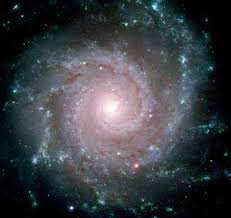 1. The Universe, the solar system, and the planet earth, in themselves, and in their evolutionary emergence, constitute for the human community the primary revelation of that ultimate mystery whence all things emerge into being.
1. The Universe, the solar system, and the planet earth, in themselves, and in their evolutionary emergence, constitute for the human community the primary revelation of that ultimate mystery whence all things emerge into being.
2. The universe is a unity, an interacting and genetically related community of beings bound together in an inseparable relationship in space and time. The unity of planet earth is especially clear; each being of the planet is profoundly implicated in the existence and functioning of every other being of the planet.
3. From its beginning, the universe is a psychic as well as a physical reality.
4. The three basic laws of the universe at all levels of reality are differentiation, subjectivity and communion. These laws identify the reality, the values and the directions in which the universe is proceeding.
5. The universe has a violent as well as a harmonious aspect, but is consistently creative in the larger arc of its development.
6. The human is that being in whom the universe activates, reflects upon and celebrates itself in conscious self awareness.
7. The earth, within the solar system, is a self-emergent, self-propagating, self-nourishing, self-governing, self-healing , self-fulfilling community. All particular life systems, in their being, their sexuality, their nourishment, their education, their governing, their healing and their fulfillment, must integrate their functioning within this larger complex of mutually dependent earth systems.
8. The genetic coding process is the process through which the world of the living articulates itself in its being and its activities. The great wonder is the creative interaction of the multiple codings among themselves.
9. At the human level genetic coding mandates a trans-genetic cultural coding by which specifically human qualities find self expression. Cultural coding is carried on by educational processes.
10. The emergent process of the universe is irreversible and non-repeatable in the existing world order. The movement from non-life to life on the planet earth is a one time event. So to the movement from life to the human from of consciousness. So also the transition from the earlier to the later forms of human culture.
11. The historical sequence of cultural periods can be defined as the tribal-shamanic period, the neolithic settlement period, the classical civilization period, the scientific-technological period and the emerging ecological period.
12. The main task of the human in the immediate future is to assist in activating the inter-communion of all the living and non-living components of the earth community in what can be considered the emerging ecological period of earth development.
My notes: (watch the ‘Canticle to the Cosmos’ series if you really want to go more deeply into this.)
1.Revelation: Thomas was deeply immersed in the religious practices of India, as well as those of the Native Americans, and both were very clear that creation was sacred. This has been lost in the Judeo-Christian-Scientific West where spirit and matter were somehow cleaved apart. Heaven, and God, were ‘out there’ somewhere, and the degradation of the Earth was the result of this belief. Thomas wanted the return of the feminine perspective that creation is Divine and the primary source for Revelation, not the Bible, or written scripture.
2. Oneness: Thomas was an advaita Vedantan. That the infinite and the finite were one, not two, was implicitly obvious to him. That every aspect of creation was intertwined is also seen in the image of Indra’s Net, or Web, the Indian metaphor for wholeness.
3. A recapitulation that Creation is not ‘just material’, but has layers of reality not easily seen. This ‘esoteric’ aspect in known in Shamanic cultures as well as those who hold Creation as Divine.
4. That these are the fundamental driving forces in the universe is one of Thomas’ fascinating insights. Amazingly enough, remove any one of these three and the Universe collapses. Brian unfolds this quite beautifully in lesson 4 of the Canticle. For yoga students and yoga teachers, the question becomes “are you allowing all three of these to manifest as deeply as possible?”
Differentiation refers to uniqueness. Every iota of creation is unique, never before existing, never to appear again in the exact same way. Like snow flakes, we all have total cosmic permission to be totally unique. Your body/mind, your life, is yours alone, unique and special. We all imitate in the beginning to get started. That is why we have mirror neurons. But ultimately, trust your own individuality. As teachers, this is even more important. Can you give permission for each student to be unique while still honoring the integrity of the pose? Fundamentalist communities have serious problems with this because they control people by limiting/stifling their individuality.
Subjectivity states that every iota of creation has Cosmic depth. Each of us, from atoms to galaxies, and all beings, speak from the Infinite Depths of Mystery. Atman is Brahman. Tat vam asi. In any posture, in any and every moment, feel the infinite presence, drashtuh svarupe. Nurture this!
Communion reflects wholeness and the inextricable intertwining of all forms across space and time. Wholeness, or Oneness is not just a good idea! To dive into this one is mind boggling. Awakening allows you to draw upon many traditions and teachers where awakening is emerging. The Whole Universe is Awakening. You just have to wake up and pay attention. Cosmic clues are everywhere!
 5. The explosion of a star gave birth to our solar system. The churning and shattering of volcanoes, earthquakes and typhoons actually helps replenish and refresh the life conditions, even as destruction is also needed. Kali serves this purpose on many levels.
5. The explosion of a star gave birth to our solar system. The churning and shattering of volcanoes, earthquakes and typhoons actually helps replenish and refresh the life conditions, even as destruction is also needed. Kali serves this purpose on many levels.
6. Awe is the primary expression of awakening, and then celebration. To Quote Mary Oliver: “Instructions for living a life. Pay attention. Be Astonished. Tell about it.”
7. This begins Thomas’ instructions of how societies and cultures self organize and begins to lay out a blueprint for large scale social changes.
8. Biology is a major means for the Cosmos to carry forth learning and experience in time. Humans can see because 2 billion years ago, a cell learned how to convert solar energy to food. The chlorophyll molecule begat the retinol molecule and vision was born.
9. Culture is another means to carry forth wisdom and experience through time. Story telling, drawing, music, dance and writing are all means to convey information to future generations. And now we have ‘the cloud’.
10. The arrow of time travels in one direction in our world. For many generations humans believed that life unfolded in ever repeating cycles. Not so in the cosmos. Cycles may repeat, but they are never the same. This puts a lot more urgency in dealing with the present conditions.
 11. Thomas was a cultural historian who saw history in geological terms. He described our historical moment as the termination of the Cenozoic era and the beginning of something new. The direction we go as a planet is being determined by choices humans make today.
11. Thomas was a cultural historian who saw history in geological terms. He described our historical moment as the termination of the Cenozoic era and the beginning of something new. The direction we go as a planet is being determined by choices humans make today.
12: What is the destiny of the human? To be determined.



